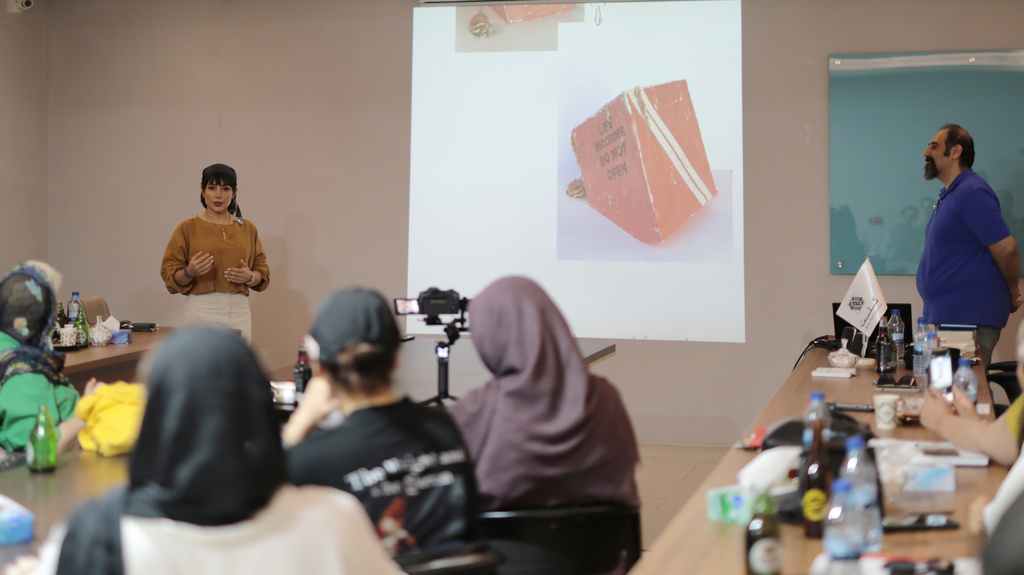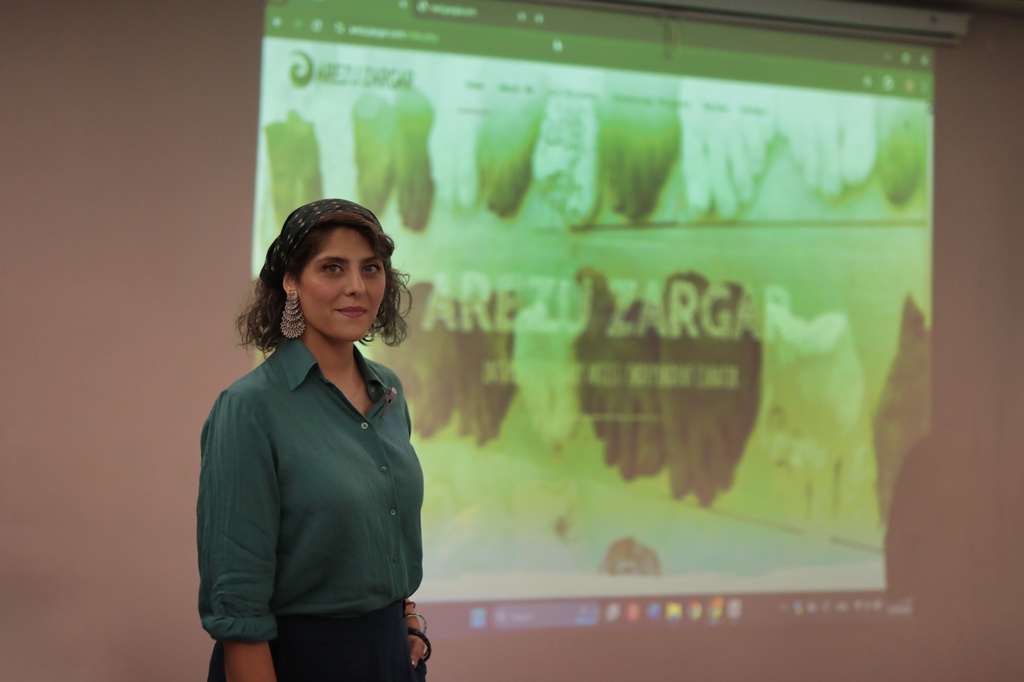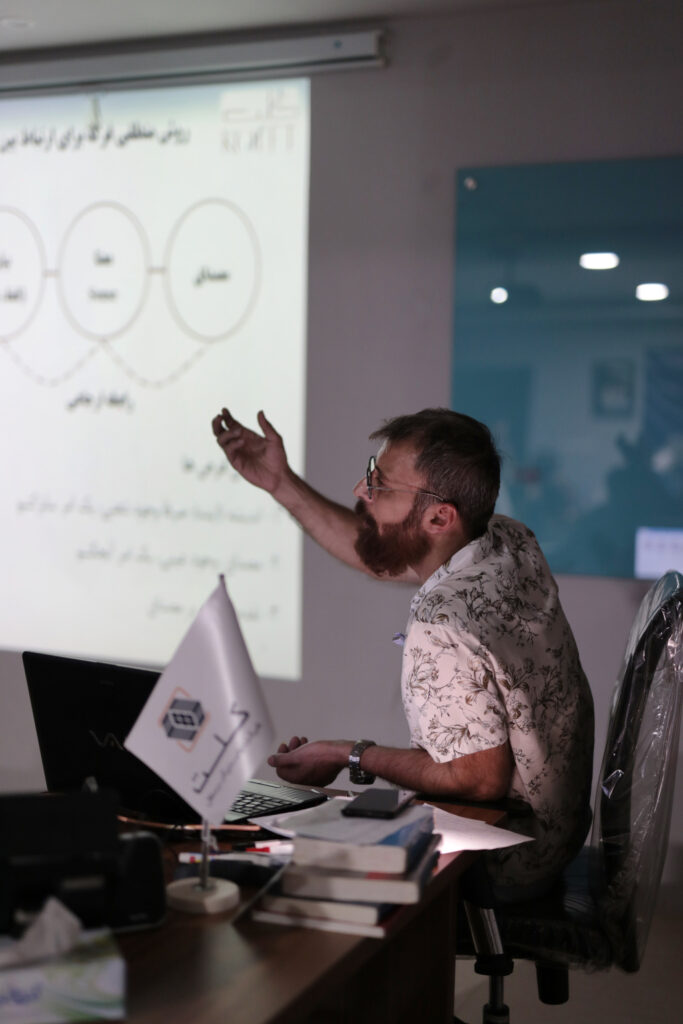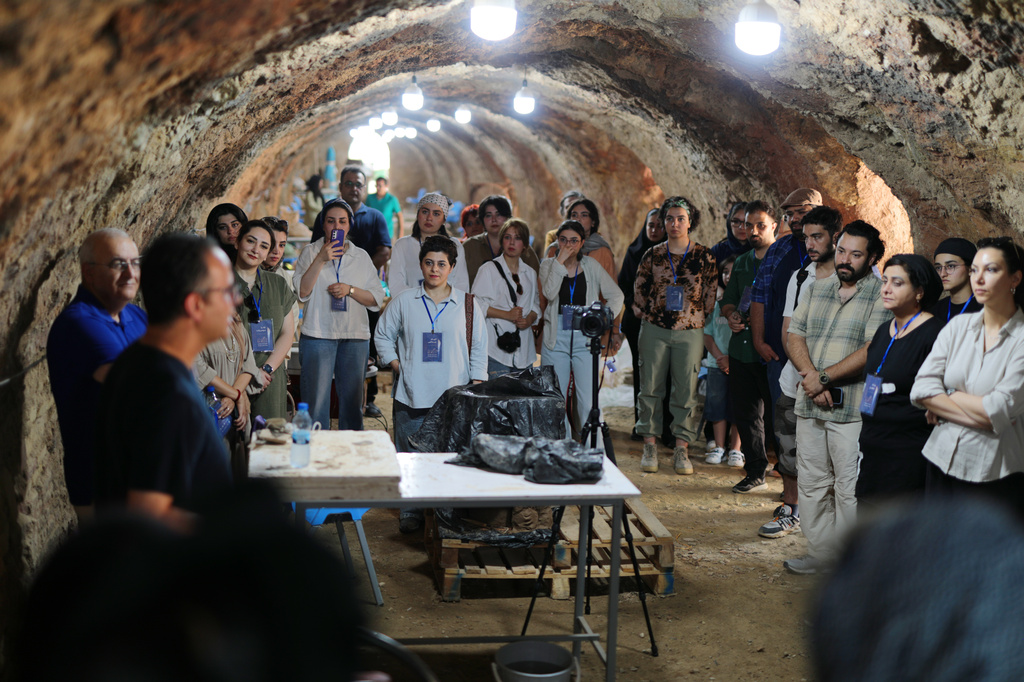
Atefe Mirsane reports on a unique event to promote monumental ceramics in Iran.
Kolet: A Fusion of Art, Technology, and Public Spaces is a groundbreaking art event dedicated to building deeper connections between ceramic art, public spaces, and technology.
In recent years, Iranian ceramic artists have expanded the boundaries of their craft, making significant contributions to the development of contemporary art in the country. Yet, the limitations of private studios have often prevented them from experimenting with large-scale works designed for public spaces.
By presenting formulated clay from northern Iran and an industrial large-scale kiln to ceramic artists, Kolet set out to create opportunities for large-scale ceramic artworks. Hence, over the course of seven days, seven attending artists created large-scale ceramic sculptures in a collaborative atmosphere.
…over the course of seven days, seven attending artists created large-scale ceramic sculptures in a collaborative atmosphere.
The event opened its doors to the public during the final two days of production. Visitors were invited into the open studio, where they witnessed the artists at work on their monumental pieces. They also attended seven “Experience Talks,” where artists shared personal stories and their career experiences in the art scene.
Kolet further enriched the program with three scholarly panels that confronted large-scale ceramic sculpture, art in public, and the contemporaneity of art. Visitors also had the opportunity to participate in a hands-on photolithography-on-ceramic printing workshop.
The completed works will be on show at the upcoming Tehran Design Week.
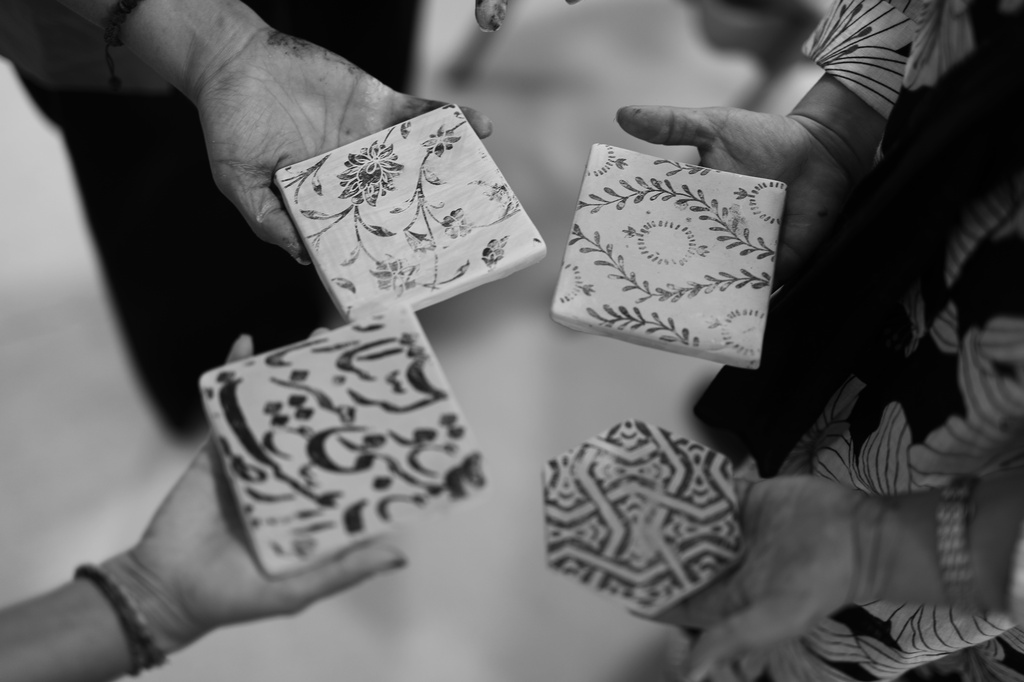
Artists Attending:
Farzad Faraji
Director of Kolet Ceramic Art Event, Ceramic Artist and Product Designer
Farzad Faraji, born in 1976, is a graduate of Handicrafts with a focus on Ceramic Arts. As a ceramic artist and designer, he is the co-founder of Ido Design Studio. In Faraji’s work, alongside formal and media-based explorations, he has explored a rather conceptual approach in his works. His art often engages with themes of reinterpreting cultural contexts and reconnecting Iran’s cultural history with the medium of ceramics.
In recent years, he has been active as a member of policy-making councils, a juror, and a director of various ceramic biennials and art events, as well as in designing and organising other artistic programs. His works have been shown in numerous exhibitions and events, earning him several awards.
Arzoo Zargar
Interdisciplinary Artist
Arzoo Zargar, born in 1981, is a graduate in Geology and Handicrafts. As an interdisciplinary artist, she creates works that combine multiple artistic media, including installation, video art, and ceramics. Her approach is rooted in an interdisciplinary exploration of concepts at the intersection of science and art. In recent years, in addition to serving as research director for ceramic art events and organizing several interdisciplinary projects, Zargar has exhibited her work at prestigious international events such as the Bangladesh Art Biennale, Jaipur Art Week (India), and the Creative Art Week in Romania.
Hadi Mohebali
Sculptor and Ceramic Artist
Hadi Mohebali, born in 1980, is a graduate in Painting. Most of his artistic experience as a sculptor has been focused on ceramics. He is the founder of Asrar Studio and, in recent years, alongside his solo exhibitions, has participated in ceramic biennials and numerous group exhibitions, receiving several awards for his work.
Yaser Rajabali
Ceramic Artist and Designer
Yaser Rajabali, born in 1987, is a graduate in Handicrafts with a focus on Ceramics. His work in ceramics is divided into two main areas: product design and production, and artistic projects. As the founder of Hobab Studio, he has designed and produced numerous ceramic products and has participated in both national and international ceramic design events, earning several awards.
His artistic projects are typically ceramic installations that engage with contemporary concerns and carry a critical perspective. In these works, one can trace the intersections of contemporary human life, literature, social, political, and cultural issues, and a dialogue with nature through the medium of ceramics.
Reza Taebi
Sculptor and Ceramic Designer
Reza Taebi, born in 1976, is a graduate in Handicrafts and the co-founder of Rastin Ceramics. Most of his ceramic works have a sculptural quality and convey human emotions. With a minimalist approach, he explores the inner and hidden layers of human experience. Strong local and cultural references are also a prominent feature of Taebi’s sculptures.
His works have been exhibited in numerous national and international exhibitions and events, earning him multiple awards.
Amin Binesh Pazhouh
Ceramic Artist
Amin Binesh Pazhouh, born in 1975, is a graduate in Handicrafts. He began his university studies in 1997, encouraged by Rahim Molaeian, and started learning ceramics in 1999 under the guidance of Master Maqsoud Pashaei. His practice took a more serious direction through collaboration and close engagement with Peyman Sajadi.
Over the years, his work has been featured in several ceramic biennials as well as in group and solo exhibitions.
Donya Rahimi
Ceramic Artist, Designer, and Instructor
Donya Rahimi, born in 1985, is a graduate in Graphic Design and Handicrafts with a focus on Ceramics. She is the founder of Donya Ceramic and has 17 years of experience in design, production, and teaching specialised ceramic courses at universities and professional art institutes.
In recent years, Rahimi has participated in group exhibitions organised by the Iranian Ceramic Artists Association, the 11th Ceramic Art Biennial, the Fajr Festival, and other events.
Lectures and Workshops:
Foad Najmedin
Scientific Director of the Kolet Ceramic Art Event, Curator and Art Critic
Foad Najmedin, born in 1980, is a graduate in Visual Communication and Art Studies. With his explorations in visual studies, branding and art history and theory on one hand, and focus on the Iranian art scene on the other, Najmedin promotes artists in developing their concepts and curates numerous artistic projects. His interdisciplinary approach has also enriched his work in writing art criticism and mapping artistic works and movements. He is a faculty member and head of the Art Studies Department at University of Science and Culture.
The Expanded Field in Iranian Sculpture
The Expanded Field is the title of an influential essay by Rosalind Krauss in the 1970s. In this essay, she addresses the theoretical challenges of sculpture in relation to the social field and outlines the inevitable transformations in contemporary sculptural practice. In the present session, the discussion focuses on the relationship between ceramic sculpture and the public sphere within the context of Iranian art scene.
Zarvan Rouhbakhshan
Artist, Curator, and Art Critic
Zarvan Rouhbakhshan, born in 1978, is a graduate in Graphic Design and Art Studies. He is an artist, curator, photographer, and art critic, and since 2004 he has been teaching at universities and art institutes. His works have been shown in more than thirty group, national, and international exhibitions, and he has held six solo exhibitions in Iran. He has also curated over thirty solo and group exhibitions and organised numerous professional panels on visual arts, in addition to giving lectures and publishing articles in the fields of philosophy of art, art history, contemporary art, and photography. He has collaborated as an art critic with various publications and served as the editor of Posht-e Bam quarterly. As an artist, he works across photography, drawing, installation, and the artist’s book.
The Sculpture in the Age of Dematerialisation
For some, contemporary art does not follow rules—but establishes them. In this way, matter becomes meaningful, and meaning manifests through matter, whereas previously this relationship was often understood as one between meaning and artistic medium. Contemporary sculpture complicates this even further, since sculptural practice today is no longer confined to classical materials like stone, clay, or metal.
What then counts as sculpture, what does not, and how so-called non-sculptures are seen and interpreted—these are questions that must be addressed. At the same time, the passage beyond material-centeredness, in fact, the dematerialisation of art and contemporary sculpture, has opened the way to democratisation and broader public participation in the design and production of artworks. With a closer look at the condition of art and the artist in this state of dematerialisation of contemporary sculpture, an explanation of the problematic will be studied.
Kourosh Arish
Sculptor and Ceramic Designer
Kourosh Arish, born in 1974, studied Mechanical Engineering and Philosophy of Logic. He is currently a PhD candidate in Philosophical Logic and a member of the Iranian Ceramic Artists Association as well as the International Academy of Ceramics. His artistic career includes several solo exhibitions, participation in ceramic biennials, national and international festivals, and numerous group exhibitions.
In recent years, he has served on the board of directors of the Iranian Ceramic Artists Association and on the policy-making and jury councils of ceramic biennials and related art events. His artistic practice centers on technique and form, with the latent concepts of his works articulated through ceramic methods. Arish is also a researcher in semantics, the logic of time, and the methodology of philosophy of science.
Idea and Instance: Sculpture in Public Space
Sculptures, like other artistic media, are often counted as the embodiment of an artist’s inner concept. In the process of their making, they gradually take shape, drawing closer to the artist’s mental vision while also shaping that vision in return. At the same time, once completed and placed in the public sphere, sculptures give rise to new layers of meaning in the minds of their audience. In this way, a constant relation is established between the material instance of the work and its conceptual idea. The ontological and semantic challenges of this relation are the questions we will turn to in this discussion.
Nafiseh Khalaj
Ceramic Artist and Object Designer
Nafiseh Khalaj, born in 1976, is a graduate in Graphic Design and Handicrafts. For nearly two decades, she has been producing functional works for everyday life through the brand Rastin, combining form and function in her practice. By focusing on illustration, printing, and design transfer techniques, Khalaj has developed a rich body of experience and skill in ceramic decoration and glazing.
Workshop: Monoprint on Ceramic
In this workshop, students will learn to create and transfer unique images onto ceramics in a hands-on setting. Alongside technical instruction, participants will have the opportunity to hear the artist’s personal experiences, gaining a deeper understanding of the applications and possibilities of this technique.
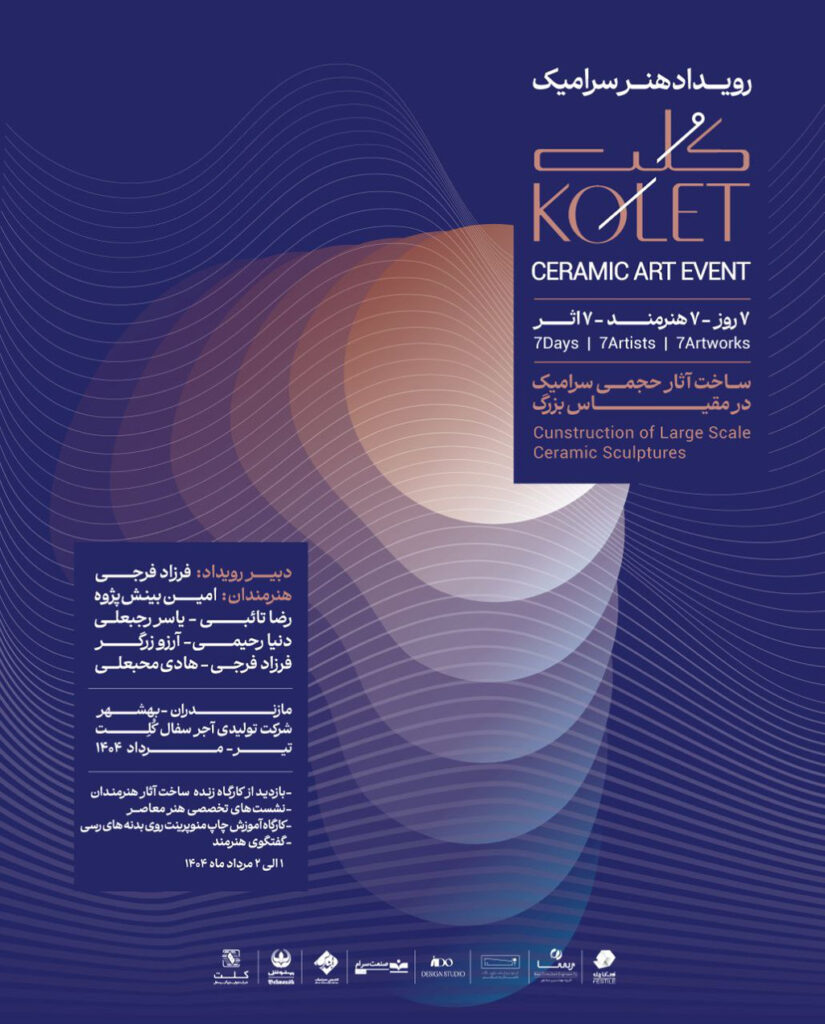
Graphic Designer: Aida Ali Bakhsh
Film and Photography: Mahtab Fard, Fatemeh Soli Content Production: Roya Hadizadeh Ajr Kolt Factory, Behshahr, Mazandaran, Iran

